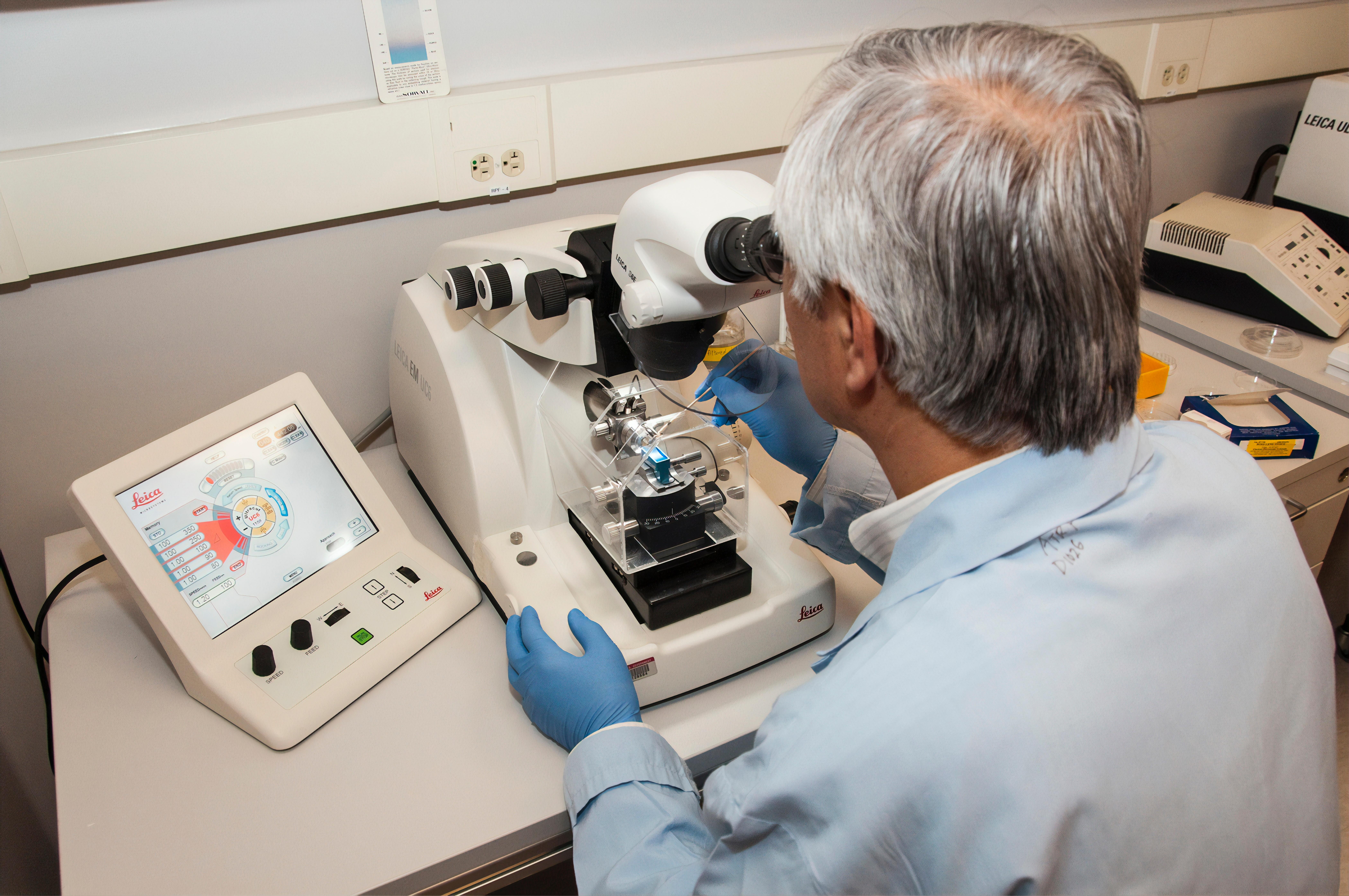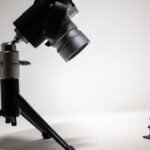Welcome to a fascinating journey into the microscopic world! In this article, we will uncover 10 intriguing facts about the microscope, shining a light on the wonders that lie beyond what the naked eye can see. As an experienced science writer with a background in biology, I am thrilled to be your guide in exploring these microscopic marvels. So, grab your magnifying glass (or rather, a cup of tea!) and prepare to be amazed by the incredible discoveries waiting to be revealed. Let’s dive into the realm of the unseen and uncover the secrets of the microscope!

10 Interesting Facts About The Microscope
The field of microscopy has allowed scientists to explore the microscopic world and uncover hidden wonders. In this article, we will delve into 10 intriguing facts about the microscope that will amaze and captivate you.
Fact 1: “Flea glasses” and the Beginnings of Microscopy
Did you know that the earliest microscopes were known as “flea glasses”? These primitive devices were used to study small insects and were the predecessors of the modern microscope. Back then, scientists were just beginning to discover the wonders that lay beyond the naked eye.
“The humble beginnings of the microscope as ‘flea glasses’ demonstrate the insatiable curiosity of early scientists, who sought to unravel the mysteries of the microscopic world.”
Fact 2: Zacharias and Han Jansen’s Compound Marvel
In the late 1590s, father-son duo Zacharias and Han Jansen created the first compound microscope. This groundbreaking invention paved the way for increased magnification and the ability to study objects in greater detail. Such a leap forward revolutionized scientific inquiry and opened new avenues in the world of microscopy.
“The visionary minds of Zacharias and Han Jansen introduced the world to the wonders of compound microscopy, forever changing the landscape of scientific exploration.”
Fact 3: Anton van Leeuwenhoek and the Microbial Universe
Anton van Leeuwenhoek, a Dutch scientist, made significant contributions to microscopy by developing powerful lenses that could see bacteria in a single drop of water. His observations of these tiny creatures single-handedly launched the field of microbiology and opened our eyes to the immense biodiversity of the microbial world.
“Anton van Leeuwenhoek’s revolutionary lenses unveiled a hidden universe teeming with microscopic life, forever altering our perception of the natural world.”
Fact 4: Robert Hooke’s Discovery of Cells
One of the most pivotal moments in the history of microscopy occurred when Robert Hooke observed the honeycomb structure of a cork under a microscope in 1665. This observation led to the discovery of cells and laid the foundation for the field of cell biology. Hooke’s meticulous observations marked the birth of a new scientific era.
“By peering through the microscope and unraveling the intricate honeycomb of a cork, Robert Hooke unveiled the hidden realm of cells, forever changing our understanding of living organisms.”
Fact 5: Honoring Galileo Galilei with the Term “Microscope”
In honor of the famed Italian astronomer Galileo Galilei, the term “microscope” was coined. The word “microscope” originates from the Greek words “mikros” meaning small, and “skopein” meaning to see. It is a fitting tribute to Galileo’s pioneering use of telescopes, which allowed us to peer into the vast expanse of the cosmos.
“The term ‘microscope’ pays homage to Galileo Galilei’s astronomical achievements, reminding us that just as telescopes unveiled the wonders of the universe, microscopes revealed the hidden treasures of the miniature world.”
Fact 6: Robert Hooke’s Cell Revelation
While Robert Hooke is remembered for his cell discovery, he made another significant contribution to microscopy. In 1665, he published “Micrographia,” a groundbreaking book featuring detailed engravings of various specimens observed under a microscope. This masterpiece allowed readers to visualize the invisible world, sparking further scientific curiosity and advancements.
“Robert Hooke’s meticulous illustrations in ‘Micrographia’ transported readers into a realm only visible through the microscope, kindling a fascination for the hidden intricacies of the microscopic world.”
Fact 7: The Power of Single Lens Microscopes
Before compound microscopes became commonplace, single lens microscopes were the go-to instruments for magnification. These early devices could amplify objects up to an astonishing 270 times. Though limited in comparison to modern microscopes, they laid the foundation for scientific exploration on a microscopic scale.
“The early single lens microscopes, despite their modest magnification, laid the groundwork for scientific inquiry, allowing us to push the boundaries and uncover the secrets of the microscopic realm.”
Fact 8: Koch’s Microscopes and the Fight against Tuberculosis
In the late 19th century, Robert Koch revolutionized microscopy by developing high-powered microscopes that allowed the visualization of bacteria responsible for diseases. Thanks to Koch’s meticulous work, tuberculosis bacteria were identified under a microscope, marking a significant leap forward in medical research and the understanding of infectious diseases.
“Koch’s pioneering microscopes were instrumental in the battle against tuberculosis, empowering scientists to target and combat these elusive disease-causing bacteria.”
Fact 9: The Artistry of Hand-Drawn Micrographs
In an era before the advent of photography, micrographs were captured through the intricate art of hand-drawing. The first hand-drawn micrograph was published in 1665 by Robert Hooke in his book “Micrographia.” These laborious illustrations not only captured the beauty of the microscopic world but also served as a means of disseminating scientific knowledge.
“The hand-drawn micrographs of yesteryear encapsulate the dedication and artistry of early scientists, evoking a sense of wonder and curiosity through detailed depictions of the microscopic realm.”
Fact 10: Electron Microscopy’s High-Resolution Images
While optical microscopes have their limitations, electron microscopes have revolutionized the way we perceive the microscopic world. These sophisticated instruments use a beam of electrons instead of light to visualize specimens, resulting in significantly higher image resolution. Electron microscopy has unlocked unprecedented levels of detail, allowing scientists to study the subtlest intricacies of cells, tissues, and even nanoscale structures.
“Electron microscopes, with their ability to unveil the microscopic world with remarkable detail, have become a powerful tool in scientific exploration, unravelling the hidden wonders at the nanoscale.”
The microscope has undoubtedly transformed our understanding of the world, exposing the hidden realms and unveiling the grandeur of the microscopic. Through the ten intriguing facts presented here, we have scratched the surface of the incredible journey that microscopy has taken us on.
As you ponder the marvels of the microscope, envision the possibilities that await us as we continue to delve deeper into the microscopic universe.
Fascinated by the world of microscopy? Curious to explore the intricate details hidden from the naked eye? Dive into the captivating facts about the microscope and uncover the secrets waiting to be discovered. With its ability to magnify objects up to a thousand times their size, this powerful scientific instrument offers a gateway to a microscopic universe. Are you ready to embark on a journey of discovery? Then click here to unveil the fascinating facts about the microscope: facts about the microscope.
Here is an example of an active internal link with the anchor and URL:
10 Interesting Facts About The Microscope
The world of microscopy is full of wonders and surprises. Have you ever wondered how this incredible invention came to be? The microscope has a fascinating history that dates back centuries. From its humble beginnings as a simple glass lens to the sophisticated instruments we have today, the microscope has revolutionized how we see the world. If you’re eager to learn more about the intriguing facts surrounding this powerful tool, check out these 10 Interesting Facts About The Microscope. You won’t be disappointed!
10 Interesting Facts About The Microscope
FAQ
Q: What were the earliest microscopes used for?
A: The earliest microscopes, known as “flea glasses,” were used to study small insects.
Q: Who created the first compound microscope?
A: Zacharias and Han Jansen created the first compound microscope in the 1590s.
Q: What did Anton van Leeuwenhoek discover with his microscope?
A: Anton van Leeuwenhoek discovered powerful lenses that could see bacteria in a drop of water.
Q: How did Robert Hooke make a significant discovery with a microscope?
A: Robert Hooke discovered cells by studying the honeycomb structure of a cork under a microscope.
Q: Why was the term “microscope” chosen?
A: The term “microscope” was chosen to honor Galileo Galilei.
“`json
“`
- Unveiling Bernhard Caesar Einstein’s Scientific Achievements: A Legacy in Engineering - July 15, 2025
- Uncover who is Jerry McSorley: CEO, Family Man, Business Success Story - July 15, 2025
- Discover Bernhard Caesar Einstein’s Scientific Contributions: Unveiling a Legacy Beyond Einstein - July 15, 2025















